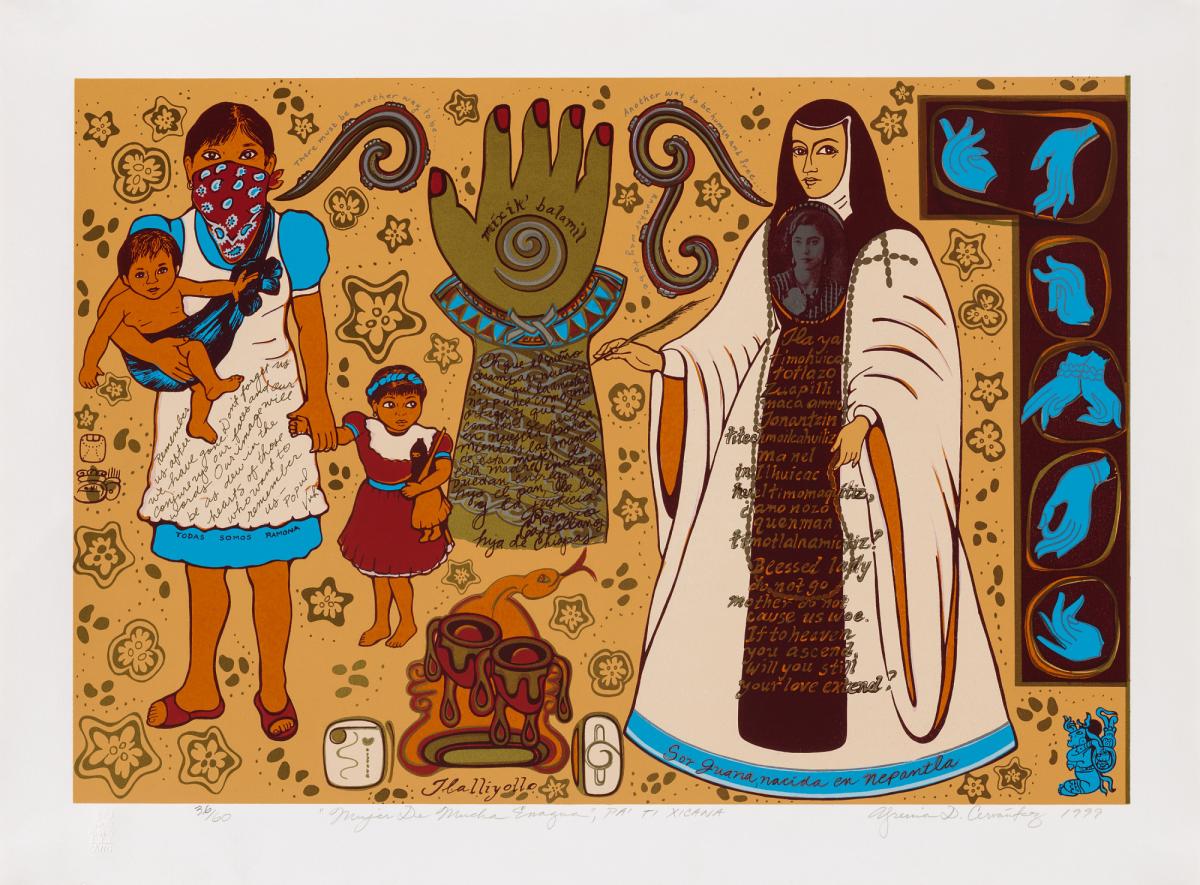
The catalogue for the exhibition ¡Printing the Revolution! The Rise and Impact of Chicano Graphics, 1965 to Now, examines the evolving nature of the Chicano movement. By the 1970s, self-defined Chicana artists began pushing back against the male-dominated representation of the community. Artists such as Ester Hernandez, Yolanda López, Judithe Hernández, and Yreina D. Cervántez sought to challenge patriarchal ways of conceiving community, aesthetics, and politics within the movement. Often in the face of hostility, Chicanas pioneered new understandings of Chicano and Chicana experience, paving the way for future examinations of identity, including Indigeneity. They ushered in new imagery and conceptual frameworks that centered on women’s lives.
In her artwork Mujer de Mucha Enagua, PA' TI XICANA, Yreina D. Cervántez pays tribute to bold female leaders of different eras. Throughout her print, Cervántez weaves text, imagery, and symbolism imbued with Indigenous and feminist references. She honors the seventeenth-century Mexican poet Sor Juana Inés de la Cruz; twentieth-century Mexican author Rosario Castellanos; and Ramona, a Tzotzil Mayan Indigenous-rights activist who held the title of Comandanta (female commander) for the Zapatistas, a Mexican indigenous revolutionary group based in the southern state of Chiapas. The figures are surrounded by Mesoamerican symbols, including references to the Aztec earth-mother goddess, Coatlicue in the double-chambered heart-shaped vessel.
Text, in both English and Spanish, plays an important role in Cervántez’s print. In the title, she uses the Indigenous feminist spelling of “Xicana” and incorporates the phrase “mujer de mucha enagua,” or “woman with a lot of petticoat,” a Zapatista expression used to describe powerful woman activists. Passages from the authors Sor Juana and Castellanos, as well as from the sacred Mayan text, the Popul Vuh, overlay the figures. A quote from the Popul Vuh emphasizes the artist’s desire to elevate these important women: “Remember us after we have gone. Don’t forget us conjure up our faces and our words. Our image will be as dew in the hearts of those who want to remember us.”
SAAM’s landmark exhibition, ¡Printing the Revolution! The Rise and Impact of Chicano Graphics, 1965 to Now, explores how Chicanx artists have linked innovative printmaking practices with social justice. This blog post is part of series that takes a closer look at selected artworks with material drawn from exhibition texts and the catalogue.



















